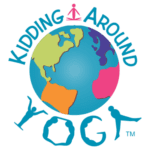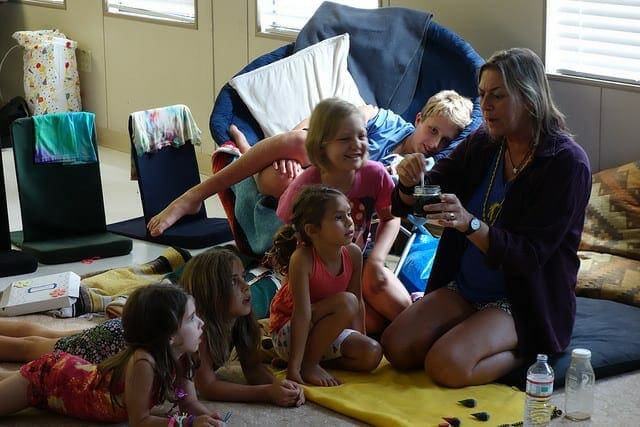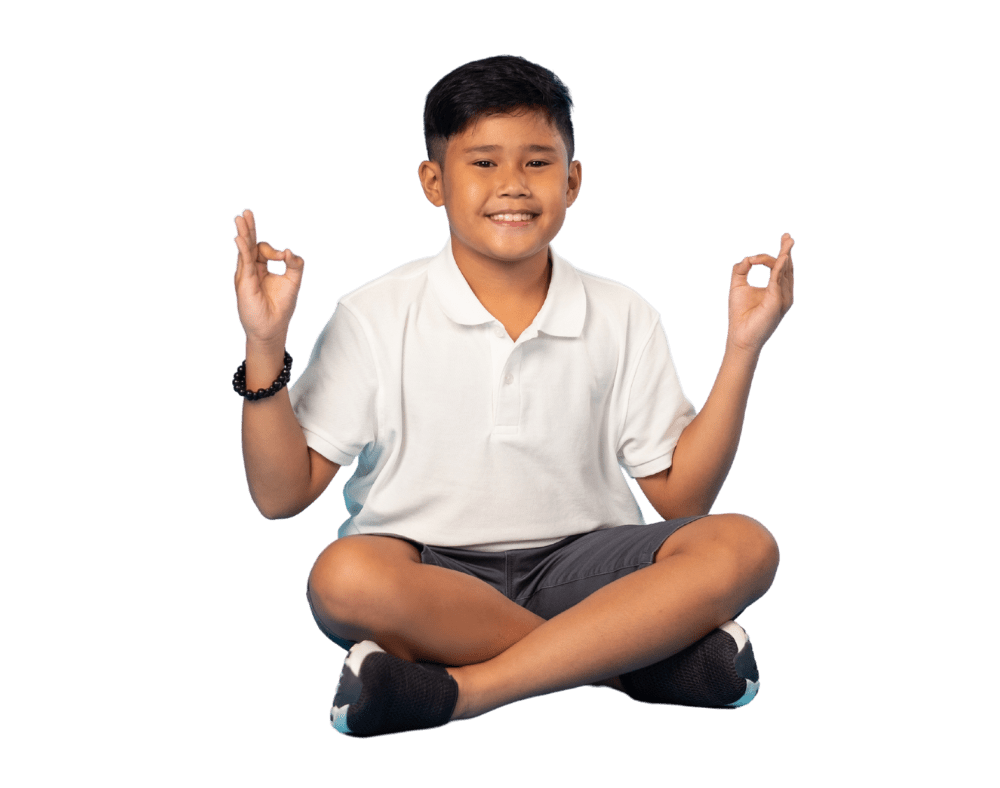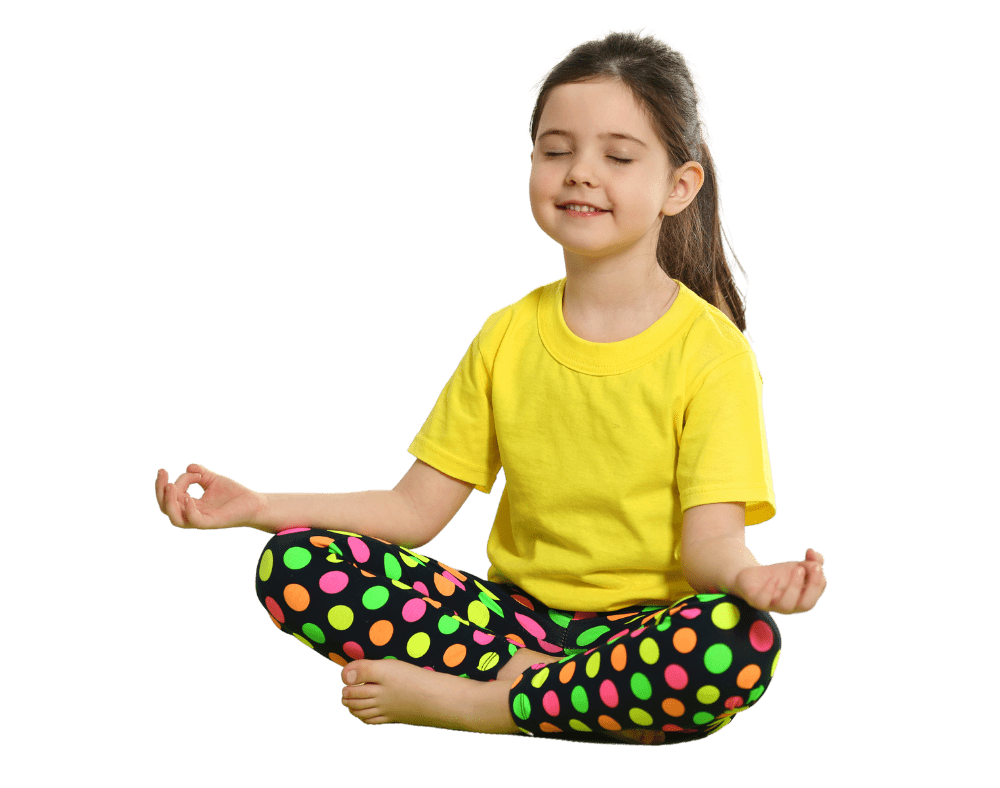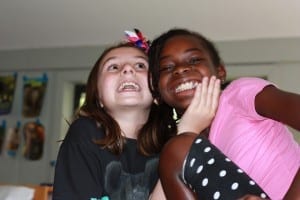
In my first regular class, we did not have mats, and I quickly realized the downside of this. We practiced on a rug in the kindergarten room, so the surface was not hard or uncomfortable, but students were constantly running into each other or standing too close together. In the first couple of classes, before the children were accustomed to the etiquette of yoga class, I called out to them to get ready for Sun Salutations, and they all rushed right up to crowd around me, leaving no room for me to demonstrate. Their eagerness about what I was going to share had kept them from realizing that if we all crowded together like honeybees in a hive, we wouldn’t be able to stretch out! Like most young children, they were more fixated on their own experience: what they would get out of it, how they could demonstrate what they know, and whether or not they would have fun!
I saw that I had to make the idea of personal space as concrete as possible, with visual reference points. To help kids spread out evenly across the room, I started referring to points on the rug. Luckily, the rug where we practiced has the letters of the alphabet all around the border, so to assure that everyone had room, I sometimes told kids to stand on a specific letter of the alphabet. They needed that point of reference to set the boundary.
One thing that guides me in teaching kids is that they not only like props, they need them. Like the letters on the alphabet rug, props are an external point of reference.
At another school where I taught for a few months, I decided to experiment with yoga dots. You can buy them online, but I decided to make them by cutting out circles from an old yoga mat. The nice thing about dots is that they can be used as a tool for helping kids distribute themselves around the room evenly when there are no mats available. I take public transportation all over San Francisco to teach, so carting around yoga mats is not really an option. While yoga dots don’t provide the same big surface that mats do, they are helpful for giving kids a home base for the practice as well as marking points for games.
One game in particular that works well with yoga dots is musical dots, a variation of musical chairs. When the music stops and all the kids try to jump on a dot, the one left without a dot stands in the middle of the circle in their favorite posture and tries to hold it while the game goes on. This is more difficult with younger children who might not understand the idea of holding the posture or even staying in the middle of the circle; in that case, another game such as duck-duck-goose can be played. You can use any creative version of this old-time favorite. I like to have the kids squat like frogs on their dot, pretending it is a lily pad. The caller goes around the outside of the circle, touching each kid on the head as they say ‘frog.’ When they choose someone to get up and chase them around the circle, they can say ‘hop!’ and they go hopping around to see who sits down on the empty dot first. It doesn’t have to be frog-frog-hop; any imaginative combination, especially one that uses yoga postures, can be used.
There is so much more that can be done with yoga dots; think of other classic childhood games, like hopscotch, or simply pretending everything else is lava and the kids must jump from dot to dot as if they are boulder-hopping to safety. Each hop can emphasize the skill of standing on one foot, or a specific yoga posture can be done on each dot. Adapt any games you know, or make up your own!
